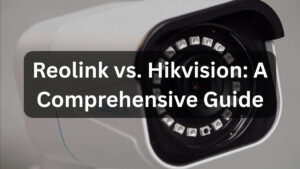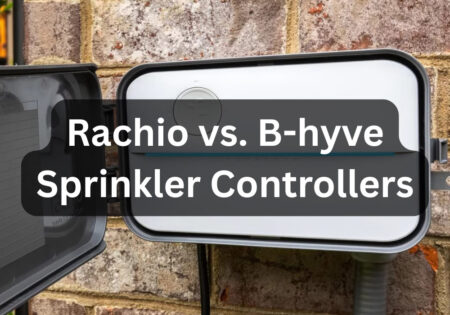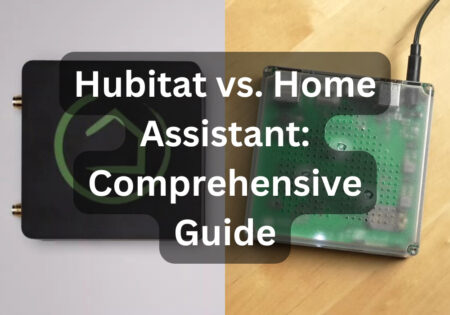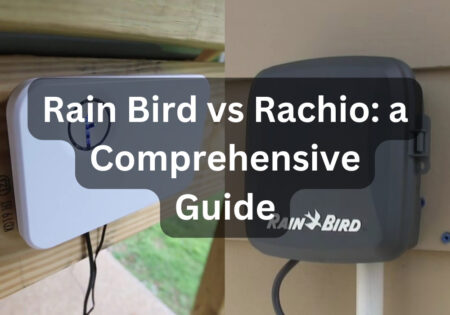What is the difference between a smart home and a smart building? As we live in an era where technology progresses rapidly, distinguishing between smart homes and buildings becomes pivotal. They both contribute to an automated and convenient experience for humans, but at a different scale and with different needs. In this article, I’ll take you on a trip so you can fully understand the unique characteristics of each one.
What is the Difference Between Smart Home and Smart Building? Key Takeaway
In smart homes, a series of connected devices come together to provide comfort and security in personal living spaces. On the other hand, the system in smart buildings is more complex, aiming to enhance energy efficiency and operational management in larger commercial areas. Deciding between a smart home or a smart building depends entirely on the scale of your needs and property. This means that if you’re an individual, a smart home is well-suited for you, while smart buildings are suitable for broader applications.

What is a Smart Home?
Smart homeowners can control and monitor the operations of their homes using advanced automation technologies. For example, a Smart Home would be equipped with devices such as voice assistants, security cameras, and smart lighting, among others, all aimed at enhancing comfort, convenience, and security.
Using a centralized control system, which is frequently accessed through voice commands or smartphones, residents may automate repetitive operations, customize settings, and even keep an eye on energy consumption to minimize expenses. With one command at a time, smart homes can make your life easier and more effective by learning from your routines and inclinations. That is its beauty.
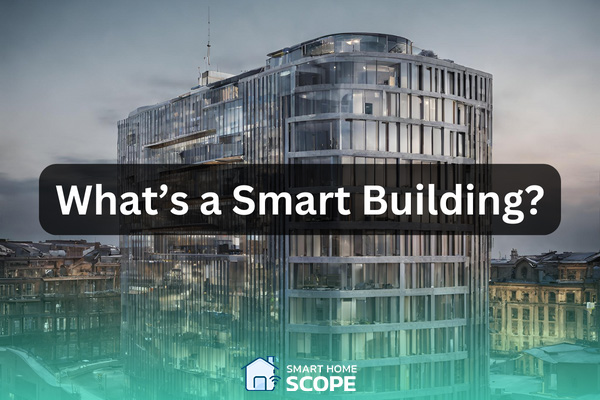
What is a Smart Building?
Beyond the personal convenience of smart houses, a smart building integrates intricate technologies throughout the whole structure to maximize efficiency and functionality on a larger scale. These structures employ state-of-the-art IoT (Internet of Things) technologies that control multiple systems like lighting, security, and HVAC (Heating Ventilation Air Conditioning), among others. The aim is to create a space that is comfortable, safe, and productive but also energy-efficient and adaptable enough to meet users’ requirements.
A centralized management system used in smart buildings enables facility managers to keep an eye on and manage every facet of the building’s operations from a single dashboard. The above enables better decision-making on energy use, space utilization as well as maintenance scheduling, thereby reducing environmental impact and leading to huge financial savings. More than being mere physical structures, smart buildings are living beings that learn and adjust according to users due to the incorporation of data analytics in them, making them anticipate and respond to changing occupants’ needs.
Difference Between Smart Home and Smart Building: Key Differences
In the poetic dance of divergence, smart homes and buildings pirouette amidst scale, intricacy, and bespoke needs, each revealing its unique essence in the symphony of progress
The difference between scale, complexity, and specific requirements they demand is what separates smart homes and smart buildings. Below, I’ve provided more detail so you can understand their distinctions more clearly.
Scale and Complexity
Smart homes are intended for single or dual occupancy, with an emphasis on optimizing the quality of life in a private dwelling using efficiency and convenience. Alternatively, smart buildings are more versatile in terms of their users, including companies, institutions, and apartment houses. Since multiple activities have to be managed across large spaces, there is a need for complex connections between devices and systems.
Technological Infrastructure
In smart homes, the communication infrastructure usually consists of a relatively basic configuration that links a restricted selection of systems and gadgets. However, to support the large number of networked devices and systems and ensure smooth operation and integration across many regions and functions, smart buildings require a more durable and scalable infrastructure.
Security and Privacy Concerns
Although security is a top priority for smart homes and buildings, there are some notable differences in approach and implementation. Because of the increased number of access points and the variety of occupants, smart buildings frequently confront more complicated security difficulties, necessitating the use of advanced security protocols and systems. The problem of privacy also becomes bigger in intelligent buildings, thus leading to the necessity for strict rules safeguarding the data and personal information of greater users.
Energy Management and Sustainability
While energy efficiency is a major concern in both fields, smart buildings usually take a more all-encompassing approach to sustainability and energy management. This includes cutting-edge lighting controls, HVAC systems, and other technology that maximize energy efficiency in vast rooms, resulting in notable savings on operating expenses and a smaller environmental effect.
Investment and Cost
Smart homes and buildings might differ significantly in their initial setup and recurring expenditures. Smart houses, which concentrate on specific systems and gadgets, might demand less initial expenditure. On the other hand, because of the size and complexity of the technology used, smart buildings require a greater financial commitment; but, over time, there may be significant cost savings owing to increased operational control and efficiency.
Anyone wishing to invest in smart technology, whether for a private home or a commercial property, must be aware of these distinctions. Though each has special advantages catered to the needs of its users, understanding the demands and difficulties associated with each might aid in making an informed choice.
Choosing the Right Solution for Your Needs
Understanding your unique demands, the scope of your project, and the long-term advantages you seek will help you decide between a smart home and a smart building solution. Here are important things to think about:
Assess Your Needs
Start by determining the main goals you hope to accomplish with smart technology. Homeowners tend to achieve security, convenience, and comfort from their smart setup. To account for future expansion, businesses and institutions might place a higher priority on operational management, scalability, and energy efficiency.
Consider the Scale
Choosing the right smart solution depends greatly on the size of your home. Generally speaking, a smart home system is best suited for single homes or compact apartments where the number of devices and integration complexity are manageable. A smart building strategy is needed for larger residential or commercial buildings, as they need a stronger infrastructure to handle vast networks of devices and system.
Evaluate the Investment
Consider the long-term savings and advantages in addition to the setup costs, which are a significant factor. Though they may require higher amounts of money in the beginning, smart structures can greatly lower costs in the long run through improved property value, energy savings, and increased operational efficiency. In the long run, smart houses can save a family’s budget and improve its living standard due to low initial costs.
Future-Proofing
Technology advances at a high pace, so do the needs of occupants and businesses. Decide on a solution that responds to your current needs, but don’t forget about the future. This guarantees that your smart system can adjust to changes in occupancy or use as well as upcoming technological improvements.
Professional Consultation
With the intricacies involved, seeking advice from experts in smart technology might yield insightful information. Professionals like our very skilled staff at Smart Home Scope can assist by helping you determine your needs and choosing the best solution specifically for you; this guarantees that the selected system meets your expectations.
Selecting the best smart building or smart home solution depends on how well you integrate technology to meet your personal or professional goals. It is possible, therefore, to select an option that addresses present needs while at the same time preparing for future difficulties by carefully assessing your requirements, project scope, and potential for expansion.
Conclusion
What is the difference between smart home and smart building, this was the question that we answered here. Buildings as well as homes take advantage of this technology which brings about the highest level of efficiency, comfort, and safety. Therefore, understanding what distinguishes between a smart building and a smart home is crucial when choosing the most suitable solution for your needs as well as establishing a sustainable environment ready for the future.
FAQs
Which security aspects are essential for smart buildings and homes?
To prevent unwanted access and guarantee data privacy, advanced encryption, multi-factor authentication, and real-time monitoring are important.
What role may energy-saving smart technologies play?
Occupancy sensors, low-energy lighting products, and automatic HVAC systems enhance resource utilization, reducing environmental impacts as well as utility bills.
What are the newest developments in smart building and smart home technology?
Key themes include the use of IoT devices for resource management, AI integration for predictive maintenance, and sustainable materials.
In comparison to smart residences, how do smart buildings affect the user experience?
A holistic approach to comfort and convenience is provided by smart buildings, which boost productivity and happiness in public and commercial areas.
